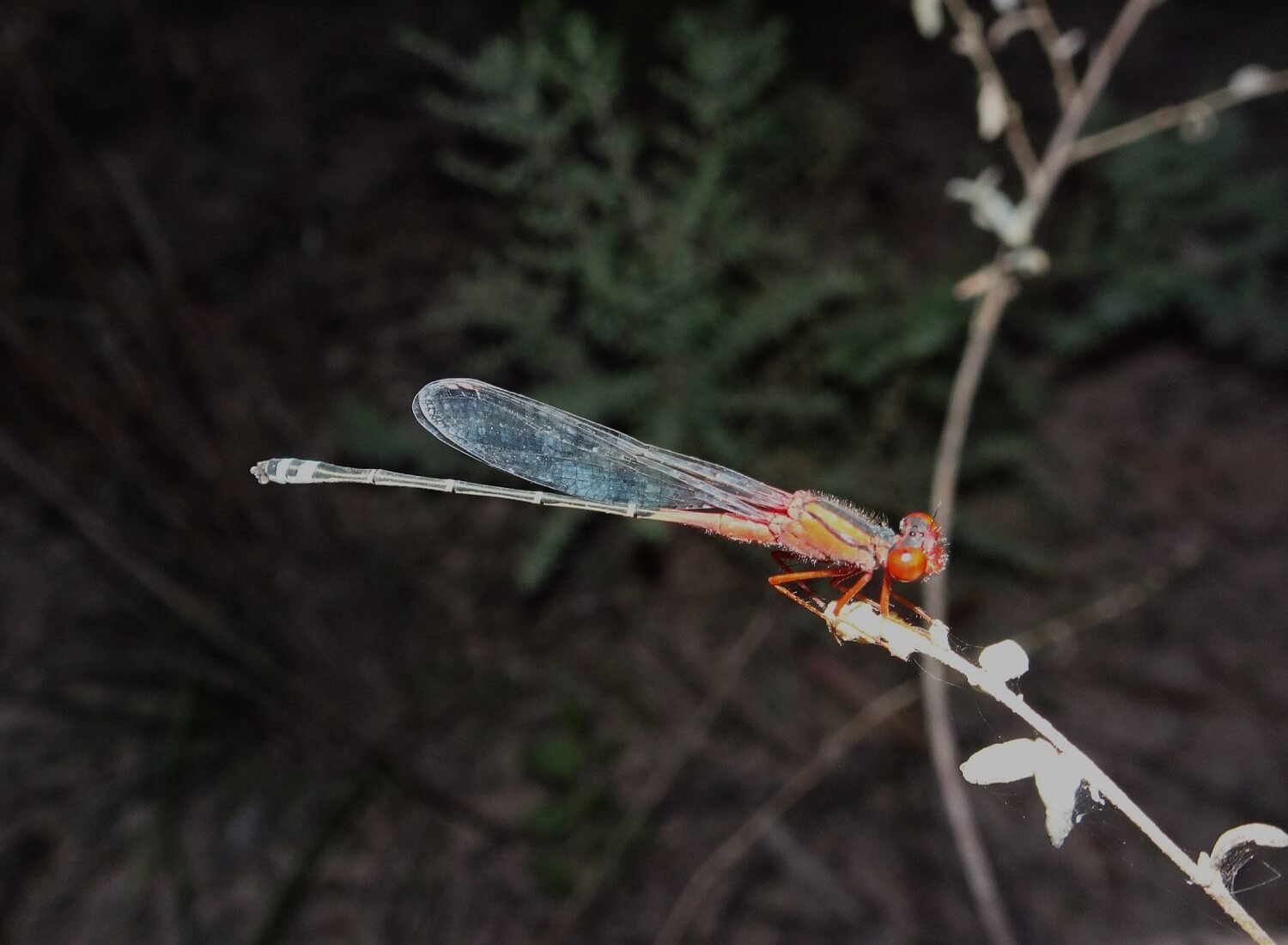Dragonflies, Damselflies and carnivorous Mudeyes
Dragonfly: Wandering Percher (Diplacodes bipunctata)
Dragonflies haven’t really been on my radar. There aren’t usually any ponds on Raakajlim, in the northern Mallee. But, did I mention the amazing rainfall this year? 190 mm so far. That’s already more than half our annual, average rainfall of 250 mm. Our ephemeral wetlands are flush with life, including all sorts of insects I’ve never seen before.
A visitor to the property asked about Dragonflies. “Yeah, there’s a red one and a blue one,” I replied. He disappeared with his camera and reported back: “The red one is actually a Damselfly. I saw seven Odonata species here, and another two species at Lake Kramen.” So, I bought THE book (1) and set off with my camera as well.
It was incredible. I found Dragonflies and Damselflies doing all sorts of weird things. Dragonflies are expert fliers; they can hover, as well as fly backwards! They catch insects mid-air, and I was pleased to read they like eating mosquitos, thereby keeping us all safe from Japanese Encephalitis and other diseases.
I saw one carrying another around by the head ... apparently, the male grasps the female behind the head to facilitate mating (!?) I watched them fly around together, the female laying eggs directly into the water.
A pair of Wandering Percher Dragonflies. Individuals start out yellow, but the males turn red when ripe. The females are orange or light brown.
Wandering Percher Dragonfly - not red, so an immature, or perhaps a female.
Then this monster from the deep appeared. It was eating a Damselfly.
A Mudeye (Dragonfly larva) eating a Damselfly. The larvae of the Damselfly is also aquatic but is more slender and has the gills hanging out the back of the body (the leaf-like caudal lamellae)
When I showed the photo to Phil he laughed “It’s a Mudeye. Good bait for fishing.” It’s true. Searching the internet for “Mudeye” yields almost exclusively fishing-related information: how to catch and use them, where to buy them live, or in various artificial lure forms. The Dragonfly Mudeye progresses through 10-12 aquatic larval stages before splitting open to reveal a Dragonfly. You can often see the discarded skins on the edge of the water. The aquatic larvae are fierce, carnivorous predators.
“Imagine your lower jaw is flexible and extendable and is equipped with fearsome hooks and sharp teeth. When prey swims past, this lower jaw will shoot out with lightning speed to capture and retrieve it for consumption” The secret life of Dragonfly larvae
300 million years ago, Dragonflies had a 70 cm wingspan. I don’t think I’d be swimming with a prehistoric Mudeye around …
In my pond, there was some sort of battle going on. The Mudeye had captured a Damselfly and a Red and Blue Damsel was trying to free it. Then a Blue Ringtail came zooming in to help. Mad chaos, I tell you.
Tau Emerald Dragonfly (Hemicordulia tau)
The psychedelic Aurora Bluetail Damselfly (Ischnura aurora)
There are 17 species of Odonata recorded in the Mallee (iNaturalist) - nine Damselflies and eight Dragonflies. You can distinguish the two by these general features:
Dragonflies - Wings open when resting, forewings and hindwings dissimilar, eyes close together or joined at the top of the head.
Damselflies - Wings folded when resting, forewings and hindwings similar, eyes separated on the side of the head.
But look out for the Owlflies. You can pick them by their ridiculously long antennae.
Further reading:
Dragonflies and Damselflies of Victoria and Tasmania (2019) was written by Reiner Richter and Ian Endersby. It’s worth pausing to reflect on these two amazing people.
Reiner, of iNaturalist fame, is currently topping the leaderboard for the greatest number of observations submitted in 2022: an incredible 16,379 observations. Not only that, more often than not, he’ll be the one to identify that bug for you.
Ian has a little project going, mapping the distribution of verified records of all Australian Dragonflies. He started with Victorian records from the Melbourne Museum “only to find that the label data had not yet been digitised. Years later, after re-gluing many dislodged heads and legs, I completed that task for the whole collection”. The resultant book is freely and publically available: Distribution of Australian Dragonflies.
I say Hurrah for people like Reiner and Ian who make entomology accessible for the rest of us.













